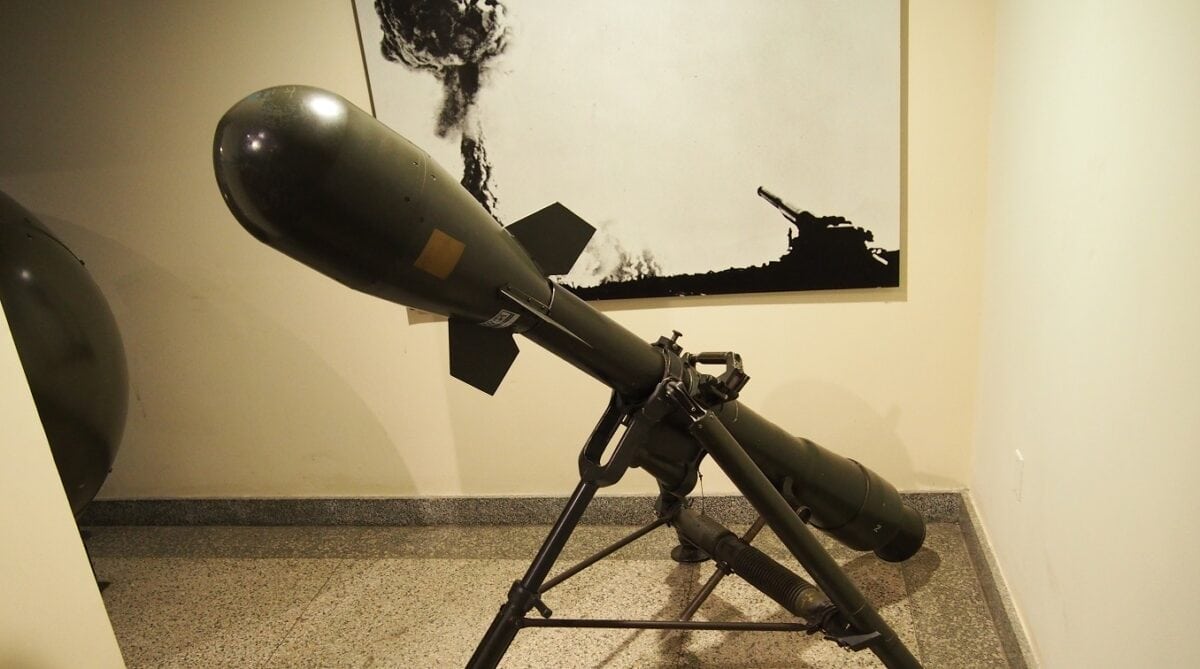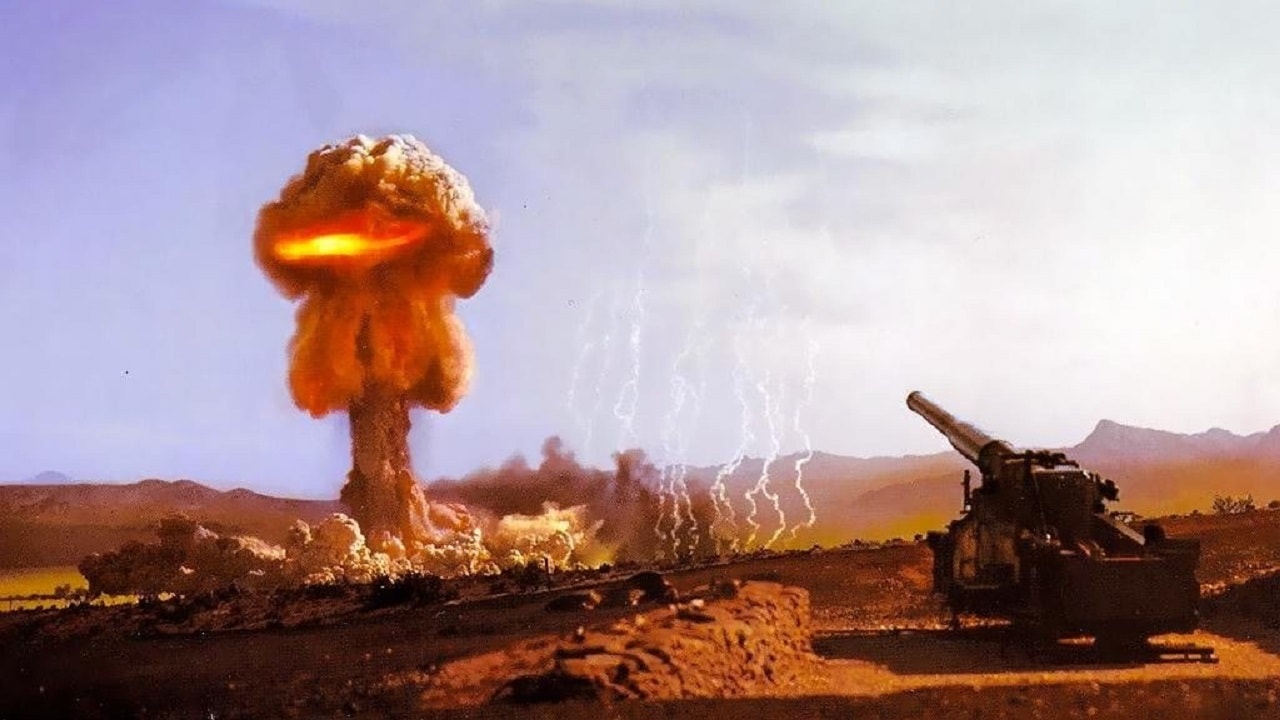“Dave, Davy Crockett, King of the Wild Frontier…” Those of us who are either (A) members of the Baby Boomer Generation or (B) Gen Xers who watched reruns of old-school TV shows will remember that jingle from the opening credits of the 1954-1955 miniseries “Davy Crockett” starring the titular hero, the real-life frontiersman and former Congressman who perished bravely alongside his fellow defenders of the Alamo in 1836.
Assuming for argument’s sake that there is indeed a Heaven, ol’ Davy is undoubtedly smiling up there at the thought of being immortalized in ballad and TV alike. However, he’s probably not too keen about the fact that his name was bestowed upon what my 19FortyFive colleague James Jay Carafano — Vice President of the Heritage Foundation’s Kathryn and Shelby Cullom Davis Institute for National Security and Foreign Policy and the E. W. Richardson Fellow – refers to in his War and More newsletter as the “Dumbest Weapon in History”: The M-28/M-29 Davy Crockett Weapon System, which was a nuclear mortar, or to be more technically accurate, a nuclear recoilless rifle. That catchy blurb caught my eye, so naturally I had to do my own writeup on this weapon.
What the Heck Were They Thinking?!?!
Seriously, a nuclear mortar/recoilless rifle to be wielded by ground troops, as opposed to a nuke deployed from the comparative safety of, say, an airplane several miles in the air, or a ballistic missile submarine (SSBN) or underground launch facility (LF, AKA “silo”) hundreds of miles from the target?!?! Dr. Carafano explains the supposed rationale thusly:
“With the outbreak of the Cold War, the U.S. Army was keen to show its relevance in the nuclear age. The boys at the Pentagon developed a concept called the Pentomic Army that they argued could fight and win on a nuclear battlefield. Part of the concept included tactical nuclear weapons that could be fielded and employed by ground troops. Davy Crockett was operated by three soldiers and mounted on a jeep. The ‘light’ M28 (ground mounted) recoilless rifle had a range of 1.25 miles, and the ‘heavy’ M29 (jeep mounted) could lob a nuke up to 2.5 miles.”
Davy Crockett Mortar Early History and Specifications
With all that in mind, in 1957, the Atomic Energy Commission (AEC) announced that it had developed a small fission warhead that could be wielded by frontline infantry grunts; from there, Major General John H. Hinrichs spearheaded the Battle Group Atomic Delivery System, which commenced at the Picatinny Arsenal in Dover, New Jersey in January 1958. Seven months later, the esteemed Mr. Crockett’s moniker was bestowed upon the weapons system.
The weapon was specifically built to fire the M388 nuclear projectile, which had a wield of 20 tons of TNT, making it one of the smallest nuclear systems ever built (ergo not the kind that would be used for an EMP strike). The M28 version of the weapon weighed 108.5 pounds (49.2 kilograms) empty, whilst the M29 had an empty weight of 316 lbs (143 kg). It was serviced by a 5-man crew. A grand total of 2,100 were built.
By 1961, these devices were actually delivered to infantry units, from Cold War hot spots (not as oxymoronic as it sounds at first) such as West Germany and South Korea as well as slightly less contentious postings (in terms of proximity to communist countries’ borders, that is) such as Guam, Hawaii, and Okinawa.
Two live-fire tests were actually conducted, both in 1962, the year before the U.S., the UK, and the USSR signed the Limited Test Ban Treaty, which banned above-ground nuclear testing. Fortunately for everyone involved, the Davy Crocketts were completely withdrawn from service by 1971.
What could’ve possibly gone wrong with it, you ask? Let me quote from Jim’s newsletter again:
“The launcher was a smoothbore weapon that fired a not very aerodynamically stable projectile. As a result, it was very inaccurate. One might think, and rightly so, that was a problem when firing a small nuclear weapon…There was no ‘failsafe’ on a Davy Crockett. In theory, a soldier could take one out of the arms room and start a nuclear war whether the president had ordered one or not.”
Where Are They Now?
For those of you dear readers in need of a good laugh and desiring to see such a harebrained invention up-close-and-personal, there are nine examples of “Dumbass Davy” (yes, I just made up that nickname on the spot right now) at museums spread out across the USA, including: the National Museum of the United States Army at Fort Belvoir, Fairfax County, Virginia (seeing as how I live in the general vicinity and am a donor to that museum, I reckon I should finally go check it out in-person); the Atomic Museum in Las Vegas, Nevada, and the Don F. Pratt Museum at Fort Campbell, Clarksville, Tennessee (Mr. Crockett’s original home state before he relocated to Texas).

OLYMPUS DIGITAL CAMERA
More: Could Mike Pence Beat Donald Trump in 2024?
More: NATO vs. Russia – What World War III Would Look Like
Christian D. Orr is a former U.S. Air Force Security Forces officer, Federal law enforcement officer, and private military contractor (with assignments worked in Iraq, the United Arab Emirates, Kosovo, Japan, Germany, and the Pentagon). Chris holds a B.A. in International Relations from the University of Southern California (USC) and an M.A. in Intelligence Studies (concentration in Terrorism Studies) from American Military University (AMU). He has also been published in The Daily Torch and The Journal of Intelligence and Cyber Security. Last but not least, he is a Companion of the Order of the Naval Order of the United States (NOUS).

